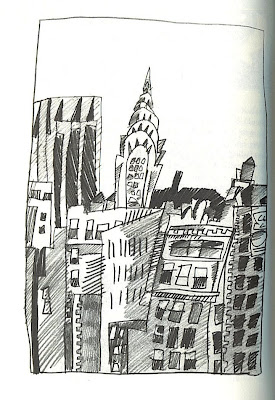This is the first and only book I've ever read by Jean Genet. I've been meaning to read A Thief's Journal for awhile now but for whatever reason never got around to it. I became particularly interested a number of years ago when one of my college classmates was assigned to do a paper on it and was so offended by the content that she asked the teacher for another assignment (and was denied).
After reading this I think I might have an inkling why (although at the same time it seems silly to make such a fuss over a little explicit gay sex). Both sensual and brutal, Funeral Rites follows Genet's grief for his lover Jean, killed in the Resistance during World War II, and his perverse attraction to the collaborator Riton. As the cover copy on a later edition states, it is a "dark meditation on the mirror images of love and hate, sex and death."
I love how the cover has no title or author--just this great photograph of Genet taken by Brassai. (I've included the spine in the above image as well).

 This novella by Graham Greene was written with the sole purpose of being adapted into a screenplay. In the book's preface, Greene states that "a film depends on more than plot, on a certain measure of characterization, on mood and atmosphere; and these seem to me almost impossible to capture for the first time in the dull shorthand of a script." Which is an interesting observation, though I'm sure that there have been plenty of incredible films made since then without being written out in novel form first. Regardless, The Third Man is a classic film, full of suspense and intrigue and atmosphere, so I suppose Greene's methods worked for him. As a novel it is not Greene's strongest (it wasn't really intended to be a novel in the first place), but worth reading if you like the film (I'd start with that first though).
This novella by Graham Greene was written with the sole purpose of being adapted into a screenplay. In the book's preface, Greene states that "a film depends on more than plot, on a certain measure of characterization, on mood and atmosphere; and these seem to me almost impossible to capture for the first time in the dull shorthand of a script." Which is an interesting observation, though I'm sure that there have been plenty of incredible films made since then without being written out in novel form first. Regardless, The Third Man is a classic film, full of suspense and intrigue and atmosphere, so I suppose Greene's methods worked for him. As a novel it is not Greene's strongest (it wasn't really intended to be a novel in the first place), but worth reading if you like the film (I'd start with that first though).













